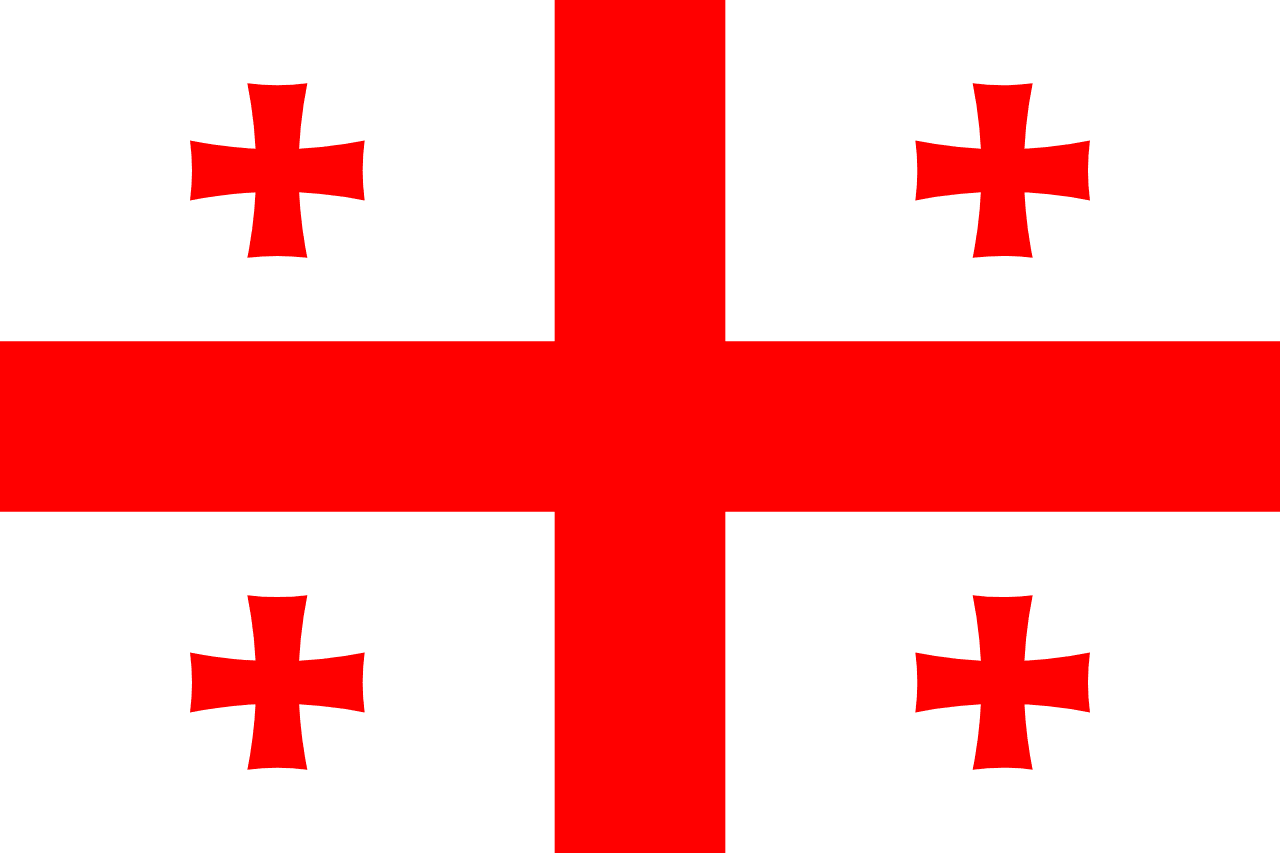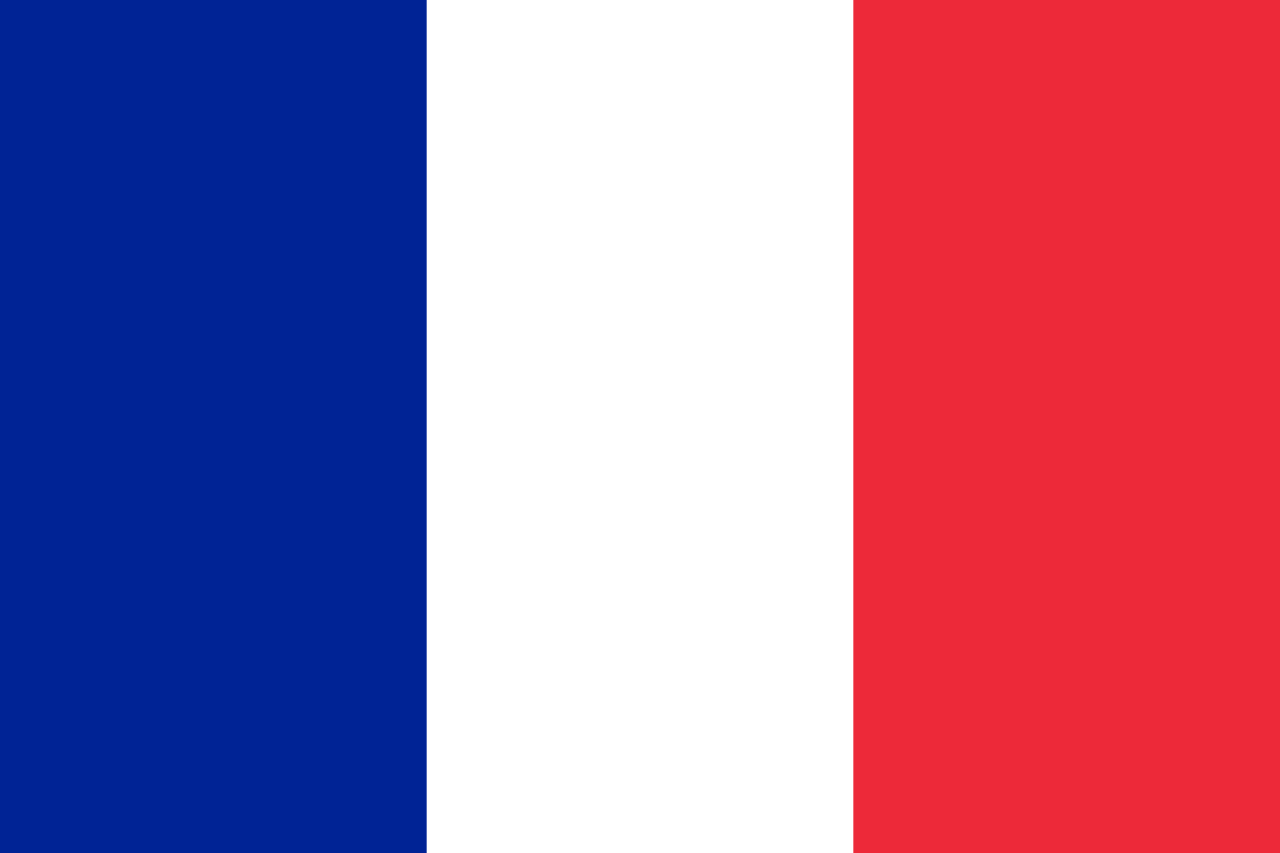La bandera de la Polinesia Francesa, una colectividad de ultramar de Francia en el Océano Pacífico Sur, presenta un diseño distintivo que refleja el rico patrimonio cultural y la belleza natural de la región. Consiste en tres franjas horizontales: roja en la parte superior e inferior, con una franja blanca más ancha en el centro. Dentro de la franja blanca hay un emblema circular que muestra una estilizada canoa polinesia de tipo "va'a" debajo de un sol dorado con rayos.
Información sobre la Polinesia Francesa
| Día de la Bandera Nacional | — |
| Estado soberano | No |
| Nombre oficial | Polinesia Francesa |
| Capital | Papeete |
| Población | 285,321 |
| Área | 4,167 km² |
| Moneda | Franco CFP (XPF) |
| Idioma | Francés, Tahitiano |
| Continente | Oceanía |
| Región | Océano Pacífico |
| Subregión | — |
| Fronteras | — |
| Zona horaria | UTC-10:00 |
| Código de llamada | +689 |
| Dominio de nivel superior | .pf |
Historia de la bandera de la Polinesia Francesa
 La bandera actual de la Polinesia Francesa fue adoptada oficialmente el 23 de noviembre de 1984. Su diseño fue elegido para representar la identidad única de la Polinesia Francesa, al mismo tiempo que reconoce su conexión con Francia. La bandera reemplazó varios diseños anteriores utilizados durante el período colonial y refleja el movimiento del territorio hacia una mayor autonomía dentro de la República Francesa.
La bandera actual de la Polinesia Francesa fue adoptada oficialmente el 23 de noviembre de 1984. Su diseño fue elegido para representar la identidad única de la Polinesia Francesa, al mismo tiempo que reconoce su conexión con Francia. La bandera reemplazó varios diseños anteriores utilizados durante el período colonial y refleja el movimiento del territorio hacia una mayor autonomía dentro de la República Francesa.
Simbolismo y diseño de la bandera de la Polinesia Francesa
Cada elemento de la bandera de la Polinesia Francesa tiene un profundo significado simbólico:
- Franjas rojas: Representan la sangre del pueblo polinesio y su conexión con la tierra. El rojo también es un color tradicional de la realeza en la cultura polinesia.
- Franja blanca: Simboliza la pureza y la relación armoniosa entre el pueblo y su entorno. También representa la influencia europea en la historia de las islas.
- Va'a (Canoa de estabilizador): Ubicada en el centro, esta embarcación tradicional polinesia simboliza la herencia marítima del pueblo polinesio, su destreza en la navegación y la importancia del océano en su cultura y vida diaria.
- Sol dorado: Representa la vida, la energía y la calidez del espíritu polinesio. Los rayos del sol simbolizan la expansión de la cultura polinesia a través del Pacífico.
- Círculo: El emblema circular representa la unidad y la naturaleza cíclica de la vida en armonía con el mundo natural.
Uso y significado de la bandera de la Polinesia Francesa
 La bandera de la Polinesia Francesa es un símbolo poderoso de identidad local y orgullo. Se exhibe ampliamente por las islas, particularmente durante festivales culturales, eventos deportivos y ceremonias oficiales. Aunque la Tricolor francesa sigue siendo la bandera nacional oficial, la bandera de la Polinesia Francesa se utiliza para representar al territorio en organizaciones y eventos regionales del Pacífico.
La bandera de la Polinesia Francesa es un símbolo poderoso de identidad local y orgullo. Se exhibe ampliamente por las islas, particularmente durante festivales culturales, eventos deportivos y ceremonias oficiales. Aunque la Tricolor francesa sigue siendo la bandera nacional oficial, la bandera de la Polinesia Francesa se utiliza para representar al territorio en organizaciones y eventos regionales del Pacífico.
La bandera sirve como un símbolo unificador para los diversos archipiélagos que conforman la Polinesia Francesa, incluidos los Islas de la Sociedad (con Tahití), las Islas Marquesas, el Archipiélago de Tuamotu, las Islas Gambier y las Islas Austral. Representa el patrimonio cultural compartido y las aspiraciones de estos grupos insulares dentro del marco de su relación con Francia.
Datos interesantes sobre la Polinesia Francesa
- La Polinesia Francesa comprende 118 islas y atolones distribuidos por un área del Océano Pacífico Sur que abarca aproximadamente el tamaño de Europa Occidental, lo que la convierte en uno de los grupos de islas más grandes del mundo.
- Tahití, la isla más grande y el centro económico de la Polinesia Francesa, ha sido sinónimo durante mucho tiempo de paraíso tropical en la imaginación occidental, inspirando a numerosos artistas, escritores y cineastas.
- Las islas de la Polinesia Francesa son conocidas por su impresionante belleza natural, incluidos lagunas cristalinas, arrecifes de coral y paisajes montañosos exuberantes. Este entorno ha convertido al turismo en una parte crucial de la economía.
- La Polinesia Francesa tiene una rica tradición cultural, que incluye música distintiva, danza (como la famosa ''ori tahiti'), y formas de arte como el tatuaje y el tifaifai (colchas de aplicación).
- El territorio fue el sitio de pruebas nucleares francesas entre 1966 y 1996, un período controvertido que ha tenido impactos ambientales y de salud duraderos e influyó en la relación política entre la Polinesia Francesa y Francia.





